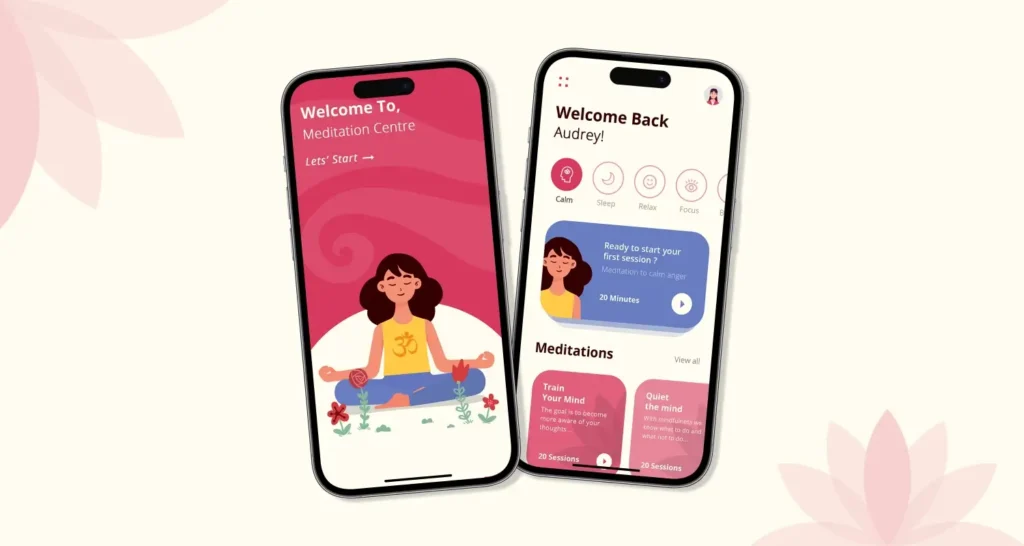Mental health apps are becoming an essential part of everyday life, helping people manage stress, anxiety, and other mental health conditions. These apps provide users with accessible tools to support their mental well-being. Whether it’s for self-help, therapy, or mindfulness, these apps play a vital role in enhancing mental health care. When planning a mental health app development, it’s important to include key features that will truly benefit users. Let’s explore the top five features every mental health app should have.
1. User-Friendly Interface
What It Means
A user-friendly interface is crucial for any mental health app. It should be simple, clean, and easy to navigate, ensuring users of all ages can access the app without difficulty.
Why It Matters
Mental health apps should reduce stress, not add to it. A well-designed, intuitive interface helps users focus on their mental health journey without getting overwhelmed by complex menus or confusing layouts.
Key Elements
- Clear Navigation: Easy-to-find sections like mood tracking, guided meditations, and resources.
- Readable Fonts: Fonts that are easy on the eyes, enhancing readability and reducing strain.
- Calm Design: Use of soft colors and calming visuals to create a soothing experience.
2. Personalized Content and Recommendations
What It Means
Personalization in a mental health app tailors the content and resources to each user’s specific needs, habits, and preferences.
Why It Matters
Everyone’s mental health journey is unique. Personalization ensures that users receive advice, exercises, and resources that are relevant to their individual circumstances, making the app more effective.
Key Elements
- Personal Assessments: Questionnaires or quizzes that help determine a user’s current mental state.
- Tailored Suggestions: Content such as articles, exercises, or meditations based on the user’s activity and feedback.
- Mood Tracking: Options to track daily mood, emotions, and triggers, which can help customize the app’s recommendations.
3. Secure and Confidential Communication
What It Means
Mental health apps often involve sensitive data. Ensuring secure communication between users and their mental health professionals, coaches, or peer groups is crucial.
Why It Matters
Privacy is a top concern for anyone using mental health apps. Without strong security measures, users may feel hesitant to share their true feelings, limiting the app’s effectiveness.
Key Elements
- Data Encryption: Protects user data and personal information from unauthorized access.
- Secure Messaging: Allows users to communicate with therapists or support groups confidentially.
- Anonymity Options: Gives users the choice to remain anonymous when participating in forums or group chats.
4. Interactive Tools for Self-Help and Therapy
What It Means
Interactive tools like guided meditations, breathing exercises, cognitive behavioral therapy (CBT) techniques, and journaling prompts make the app more engaging and helpful.
Why It Matters
Interactive tools empower users to take control of their mental health. These features offer practical steps to reduce stress, manage emotions, and build positive mental habits.
Key Elements
- Guided Meditations: Audio or video sessions that help users relax and focus.
- CBT Exercises: Interactive activities that help users reframe negative thinking patterns.
- Mood Journals: Allows users to record their thoughts and feelings, providing valuable insight over time.
5. Crisis Management Resources
What It Means
Crisis management features offer immediate help to users who may be experiencing severe mental distress, such as panic attacks, depression, or suicidal thoughts.
Why It Matters
Mental health apps must be prepared for emergency situations. Providing immediate access to crisis resources ensures that users have somewhere to turn during their most vulnerable moments.
Key Elements
- Hotlines and Emergency Contacts: Quick links to mental health hotlines and crisis centers.
- SOS Button: A feature that connects users to emergency services or their support network instantly.
- Grounding Techniques: Tools that help users manage overwhelming emotions in real-time, such as breathing exercises or grounding activities.
Conclusion
A well-designed mental health app can be a powerful tool in supporting mental well-being. Incorporating these essential features—user-friendly interface, personalized content, secure communication, interactive self-help tools, and crisis management resources—can make a significant impact on users’ mental health journeys. As mental health becomes a growing focus worldwide, apps that prioritize user experience, security, and practical resources will lead the way in providing accessible care.
FAQs
1. What is the most important feature of a mental health app?
The most important feature is a user-friendly interface. It ensures that users can navigate the app easily without feeling overwhelmed, which is crucial for mental health support.
2. How do mental health apps personalize content for users?
Mental health apps often use personal assessments, mood tracking, and user feedback to tailor content and recommendations to the individual’s specific needs.
3. Are mental health apps secure?
Yes, many mental health apps use data encryption, secure messaging, and anonymity options to protect user privacy and ensure confidential communication.
4. Can mental health apps help during a crisis?
Yes, mental health apps with crisis management features provide resources like hotlines, SOS buttons, and grounding exercises to help users manage emergencies.
5. Why are interactive tools important in mental health apps?
Interactive tools engage users actively, offering practical exercises such as guided meditations, CBT techniques, and mood tracking, which can significantly improve mental well-being.



